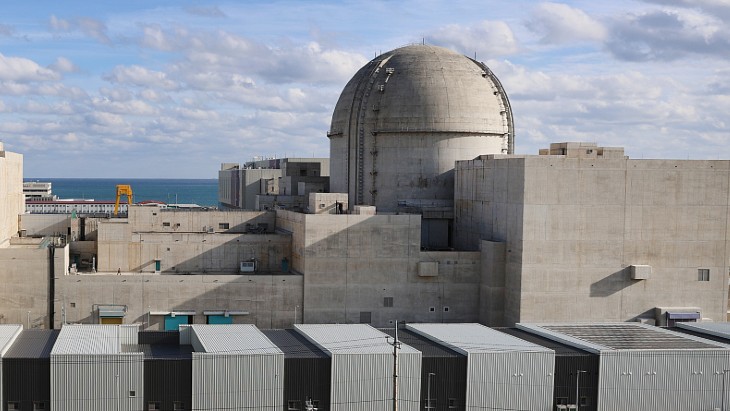The main clean-up contractor at the US Department of Energy's (DOE's) Idaho Site, has entombed an historic nuclear reactor in place and treated the reactor's remaining sodium coolant six months ahead of schedule and under budget.
.jpg) |
| The exterior of the EBR-II reactor building (Image: CWI) |
CH2M-WG, Idaho, LLC (CWI) said yesterday that crews with the Decontamination and Decommissioning (D&D) Program recently completed pouring more than 3400 cubic yards of concrete grout into the basement of the Experimental Breeder Reactor-II (EBR-II) building to fill in any remaining void spaces and effectively entomb the reactor.
Workers also removed and treated the last of the sodium coolant from the reactor's nine heat exchangers. The exchangers were used to cool the liquid metal and direct the steam to a generating turbine to produce electricity when the reactor was operating.
The EBR-II was the basis of the US Integral Fast Reactor (IFR) program, considered by the National Academy of Sciences to be the nation's highest priority research for future reactor types. This was developing a fully-integrated system with electrometallurgical 'pyroprocessing', fuel fabrication and fast reactor in the same complex. The reactor could be operated as a breeder or not.
EBR-II began operations in 1961 at the former Argonne National Laboratory-West site - now called the Materials and Fuels Complex - and had a power output of 62 MWe. The reactor was later used to generate electricity for other site facilities. EBR-II was used for testing materials and design concepts to improve reactor safety, culminating in the tests of the inherently safe Integral Fast Reactor concept in 1986.
Argonne said these tests demonstrated the safe shutdown and cooling of the reactor without operator action following a simulated loss-of-cooling accident.
The reactor was shut down in 1994 and its fuel was removed and transported to another site facility for safe storage.
The DOE grouted the reactor in place instead of removing it to protect workers from industrial hazards and radiological risks, CWI said. Crews filled the reactor vessel with grout over two years ago and recently completed the remainder of grouting at the facility under CWI's contract.
Completing the project early and under budget paved the way for additional work for the crews, CWI said, with the DOE recently approving the use of the D&D cost savings to allow workers to prepare the sodium boiler building for demolition.
Eventually, the large, concrete dome that surrounds the EBR-II reactor will be removed and a concrete cap several feet thick will be placed over the remaining structure.
The three-year, $730 million project, funded through the DOE's Office of Environmental Management, focuses on early risk reduction and protection of the Snake River Plain Aquifer.
IFR program goals were demonstrating inherent safety apart from engineered controls, improved management of high-level nuclear wastes by recycling all actinides, so that only fission products remain as high-level waste, and using the full energy potential of uranium rather than only about 1% of it. All these were demonstrated, though the program was aborted in 1994 before the recycle of neptunium and americium was properly evaluated. IFR fuel first used in 1986 reached 19% burnup (compared with 3-4% for conventional reactors), and 22% was targeted.
In 1994, Congress under the Clinton administration shut EBR-II down, delivering a major setback to FNR fuel cycle developments. In 2001, as part of the Generation IV roadmap, the DOE tasked a 242 person team of scientists from DOE, UC Berkeley, MIT, Stanford, ANL, LLNL, Toshiba, Westinghouse, Duke, EPRI, and other institutions to evaluate 19 of the best reactor designs on 27 different criteria. The IFR ranked first in their study which was released in April 2002.
The IFR program is now being reinvented as part of the Advanced Fuel Cycle Initiative, while EBR-II is being decommissioned. An EBR-III of 200-300 MWe was proposed but not developed.
CWI comprises CH2MHill and the URS Corporation that directs the Idaho Cleanup Project at the DOE's Idaho Site.
Researched and written
by World Nuclear News




_72306.jpg)


_49562.jpg)





